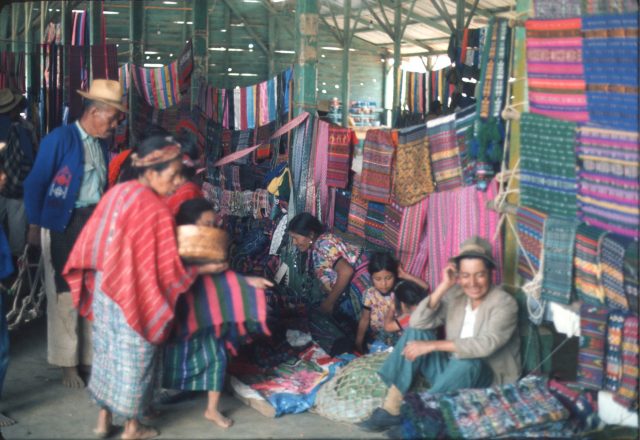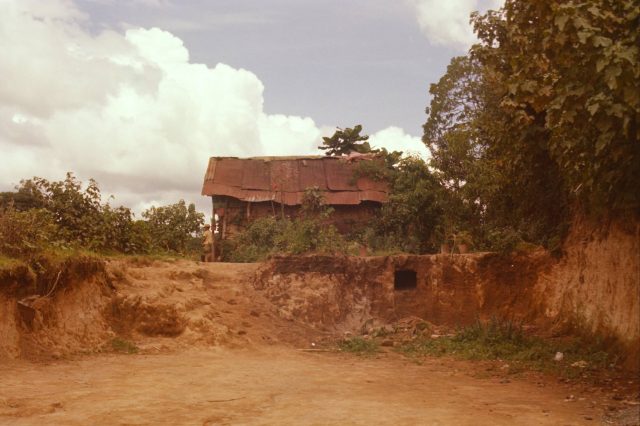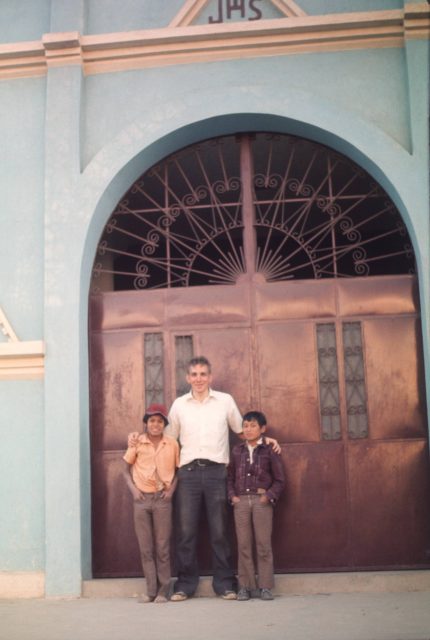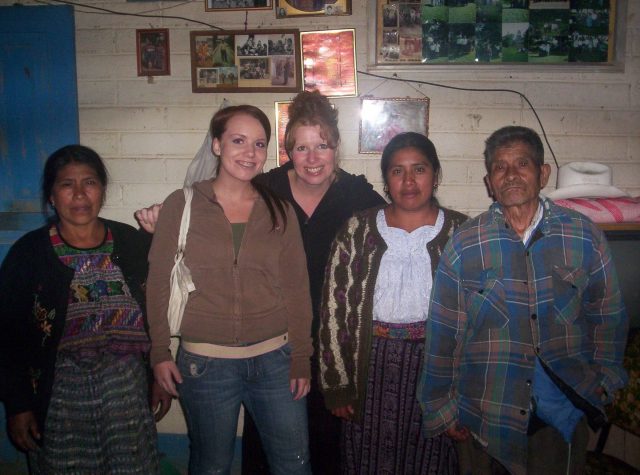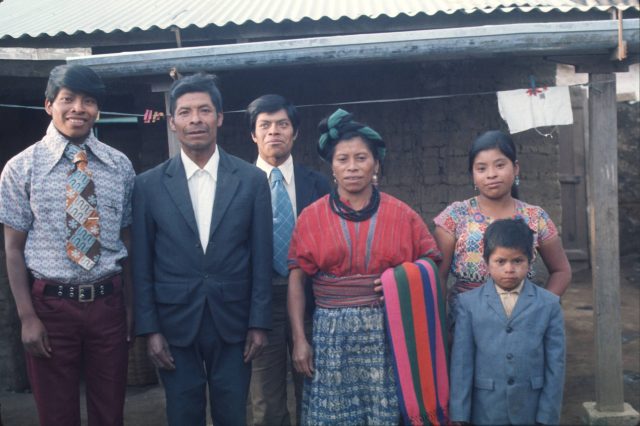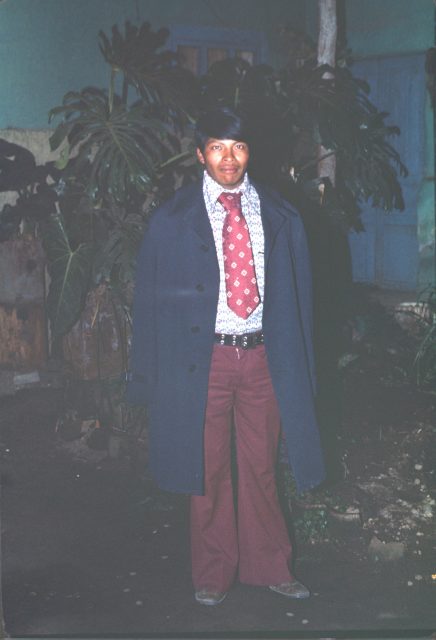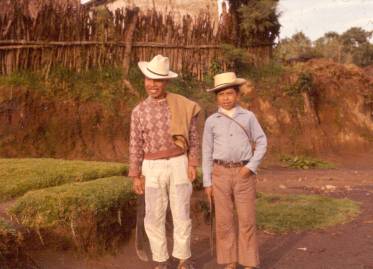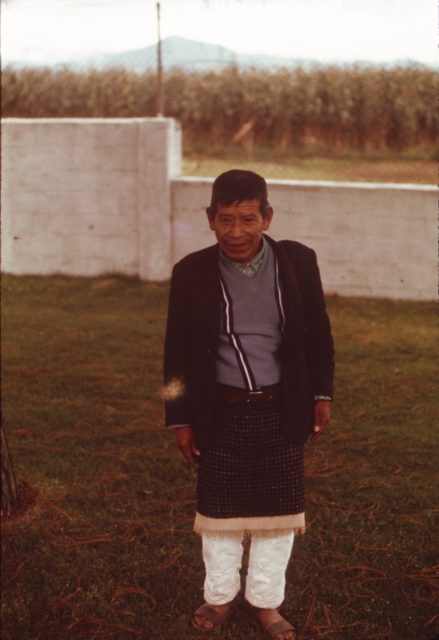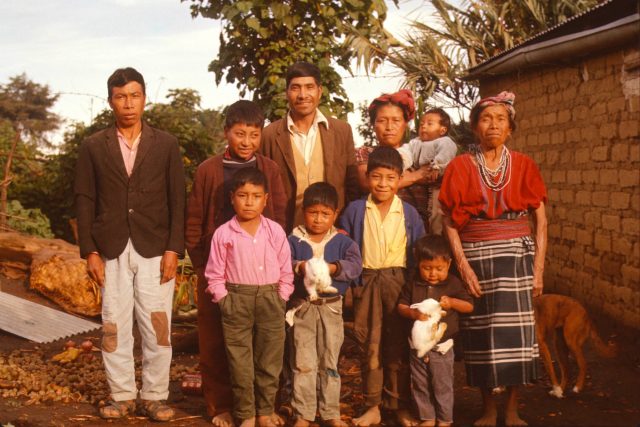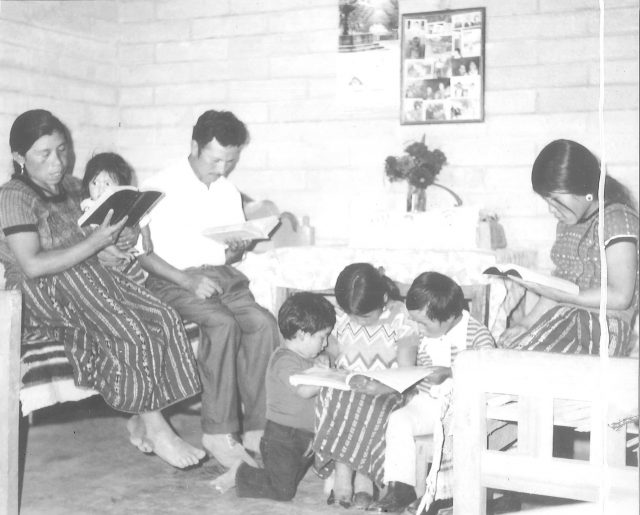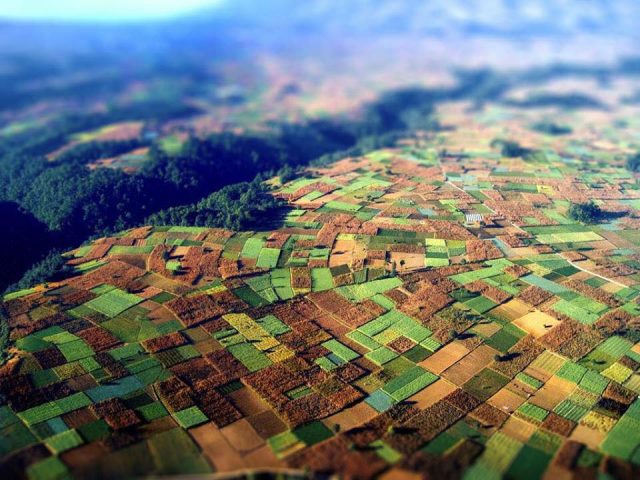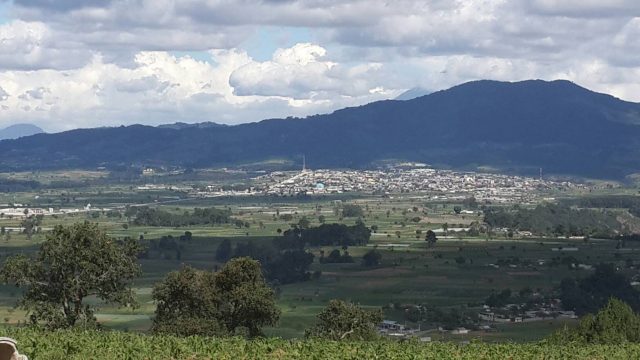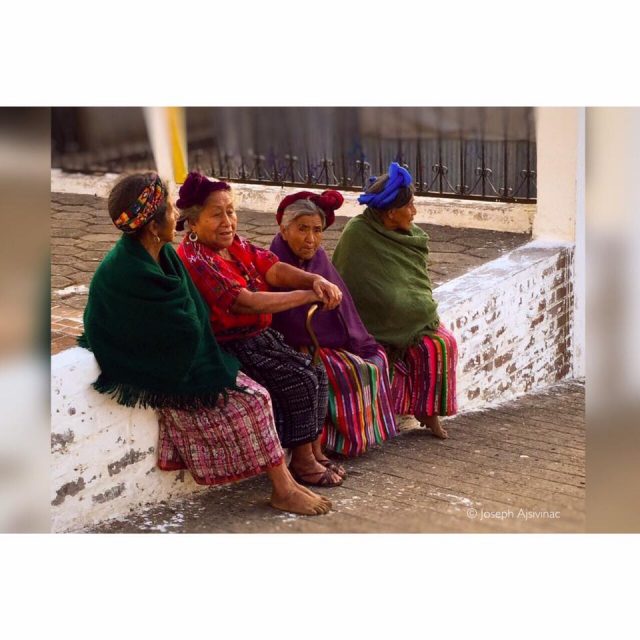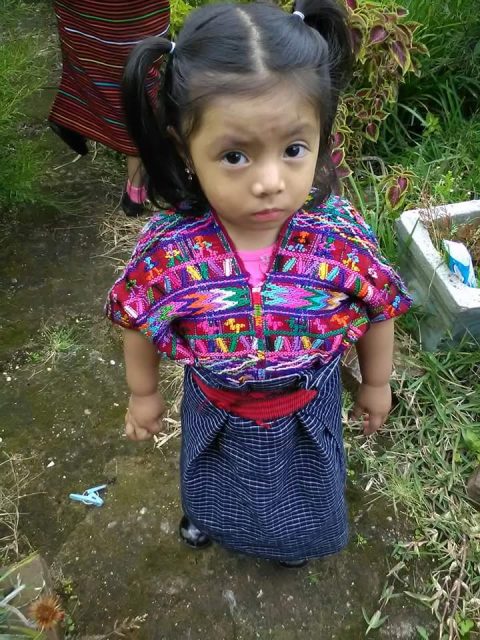Patzicía, Guatemala
Patzicía is a beautiful town in the central mountains of Guatemala. I served in this town a total of 11.5 months on three assignments:
- February 4–October 10, 1975: With missionary companions David Frischknecht (2-4-75 to 5-29-75), Samuel Schmutz (5-29-75 to 9-3-75), and James Aaron Nelson (9-3-75 to 10-22-75).
- February 4–March 31, 1976: After the earthquake, many LDS missionaries were assigned to live and work in a tent camp set up in Patzicía to help the people clear out the rubble and build temporary shelters. See pictures and stories about Camp Patzicía.
- July 7–August 3, 1976: The last month of my mission, I was assigned to help finalize an official translation of the missionary discussions in Cakchiquel, along with Elder David Frischknecht and Julio Salazar (who had already completed his mission).
When I served in Patzicía in 1975 and 1976, there was one branch. Today there is a stake (the Patzicía Guatemala Stake, organized November 10, 1966) and 4 wards (the Patzicía Ward, El Calvario Ward, Reforma Ward, and Zarahemla Ward).
Cakchiquel Class
In February 1975, I was one of a dozen missionaries assigned to work in the highlands of Guatemala among the Cakchiquel Indians, who spoke very little Spanish. Dr. Robert Blair, a professor of linguistics at BYU, went to Guatemala and taught us a few weeks of Cakchiquel. He not only taught us the language, but also taught us techniques to learn a language, so that after he left, we could continue learning among the people. We taught us for 9 days, February 5-11, (40 hours of formal classroom instruction). We also had help from Elder Milo Garcia who learned Cakchiquel on his own and extended his mission two months to help us. We also had five native speakers to work with us in small groups.
Cakchiquel is a very difficult language to learn. It is not related at all to Spanish or English. Dr. Blair went to Finland on his mission, and said that learning Cakchiquel is about the same level of difficulty as Finnish.
About two weeks later, we received a two-volume grammar book, Cakchiquel Basic Course, that he and Dr. John Robertson developed in 1969 that we used for the rest of the mission.
March 10, we started another Cakchiquel class with Dr. Blair. 9 weeks later, learn from. xxxxxxxxxxx and then he came back xxxxxxxxxxxxxxxxxxxxxxxxxxxxxxxxx for another two weeks of class.
As we learned, we gradually spoke more and more Cakchiquel to people in town and during teaching lessons.
Read more on the page “A History of Cakchiquel (Kaqchikel) Translation in The Church of Jesus Christ of Latter-day Saints.”

Cakchiquel class in Patzicía, Guatemala, in 1975 for LDS missionaries. Front row (left to right): Milo Garcia, Jenette Blair, Margaret Blair, Greg Martin, Elder Hansen, Lisa Blair, Taz Evans, Hermán Tum. Back row (left to right): Larry Richman, Rosa, Bobby Blair, Deborah Humphries, David Piggot, Robert Blair, Elder Handison, David Frischknecht, Julio Salazar, D Warnock, Garth Howard, Jon Call.

Robert Blair, David Frischknecht, and Spencer Palmer in front of Hortencia’s store in Patzicía where the missionaries rented a room.
We continued to study and teach in Cakchiquel daily. It took about a year until I felt comfortable teaching in Cakchiquel. (In contrast, I felt comfortable with Spanish about five months into the mission.) Toward the end of my mission, sometimes when David Frischknecht and I would have conversations about the people, we would slip into Cakchiquel because it felt more natural than English.
Speaking Cakchiquel daily for most of my mission, I wasn’t able to progress in Spanish as much as I would have liked. By the end of my mission, I was more proficient in Cakchiquel than in Spanish. When I returned to BYU, I majored in Spanish and by the time I got my bachelor’s degree, I felt equally comfortable in Spanish and Cakchiquel.
Scenes of Patzicía

Jorge Blas at the Patzicía Post Office. He was the postmaster and telegrapher
and was a good friend to the missionaries. Jorge Blas, el jefe de correos y el telégrofo de Patzicía. Fue un buen amigo de los misioneros.

Elder David Frischknecht vaccinating chickens in the marketplace in Patzicía, Guatemala, on Wednesday, February 19, 1975
Missionary House
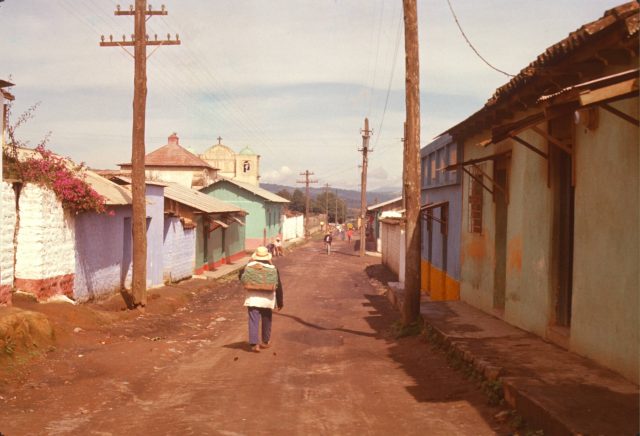
The green house on the right is where the missionaries rented a room from Don Chomo and Hortencia Ruiz in Patzicía.
LDS Chapel in Patzicía, Guatemala

Behind the Patzicía church was a small co-op with animals that was set up by Elder Noorlander several years earlier as a welfare project. Read memories from Elder and Sister Noorlander, senior missionary couple 1973-74.
We made a map of Patzicía to help missionary work and to donate to the Mayor. We traced an old aerial photo onto onion skin paper to get the right dimensions. We then walked every street and updated it to the current status, measuring new buildings and streets. Here is a photo of the map we made (15 hours drawing time). We made 2 more copies by hand (8 hours) and presented a copy to the mayor. Letter to the mayor. Image of the map. Invitations we handed out in town.
People of Patzicía
The Cakchiquel people are special. They live a humble life close to the earth and know that God blesses them. They know that it is through God’s power that seeds sprout and grow into food. They see and appreciate the miracles around them. They don’t have much chance for a good education because they have to work hard to survive. But God blesses them to learn and accept the gospel in ways other than studying to gain an intellectual knowledge. Many of the
members have had dreams that have foreshadowed their future teaching by missionaries.
In 1974, just prior to my arrival in Guatemala, Elder Daniel O. Noorlander lead a group of members and missionaries to compile a book titled The Maya: Sons and Daughters of the Royal House of Israel (see alternate version part 1 and part 2.) It contains stories and testimonies of Cakchiquel Indians and those who labored among them. It tells of early missionary efforts among the Cakchiquel Indians in the towns of Patzicía and Patzún.
For example, Daniel Mich was an early convert to the Church in Patzicía. Daniel had a dream wherein he saw President David O. McKay, but did not know who he was until later when the missionaries showed him a picture of President McKay. (Read “Indians of Guatemala” in the Relief Society magazine in September 1969, beginning on page 650.)
Another member, Fidel Cujcuj heard the song “Come, Come Ye Saints” in a dream and learned to play it on his marimba. The first Sunday he was invited to an LDS meeting, they sang the song “Come, Come Ye Saints.”
Luis and Michaela Alonzo were the first Cakchiquels to be baptized in Patzicía, on June 2, 1958. On June 26, 1958, Daniel Mich, Sister Cruz de Mich, and their youngest son, Clemente, were baptized. These accounts are documented in the book Pioneer in Guatemala: The Personal History of John Forres O’Donnal, Shumway Family History Services, Yorba Linda, CA., pp. 169-177.
See a list of members in Patzicía. I believe this is a list that Pablo Choc created (in his handwriting) in 1975. However, it is possible that this was the list he used to track down members after the earthquake in February 1976, but I can’t vouch for that.
Pablo Choc Family
See the earthquake page for more photos and information about the Pablo Choc family. Read an article about Pablo Choc. Article about Pablo Choc on the Guatemala Public Affairs site.
Pablo Choc tells about saving for years for Daniel to go an a full-time mission. He had saved 100-150 quetzals, which was a large sum of money in those days. One day (in December?), the military was in town to round up young men as potential recruits for the military. The way they “recruit” is to grab potential young men from the street and take them to the jail where they sort through those they want. Pablo had to give the guards the 100-150 quetzals to get Daniel freed, which left nothing for the mission. Other members and the mission came up with the needed money so Daniel could serve, and missionaries donated clothing for Daniel to use.
Read a tribute to Elder Daniel Choc.

This is a swatch from a corte that has been in the Pablo Choc family for years. This swatch was prepared by Margaret Blair and given to missionaries who served in Patzicía during a missionary reunion at the Robert Blair home on October 2, 2015.
Pablo Choc died July 28, 2010.
Domingo Choc Family
Other Patzicía Members
Members in Patzicía (left to right): boy, Clemente Alonzo Mich, Mateo Miculax, Elder Jon Call, Elder Larry Richman, Leocadio Per, boy, Martin Per

Elder Richman teaching priesthood meeting in Patzicía on September 7, 1975. Front row (left to right): Daniel Mich, Fidel Cujcuj, Pablo Choc. Second row (left to right): Clemente Alomzo Mich, Elder Nelson, Santiago, Alejandro Choc. Third row: unknown. Fourth row (left to right): unknown, Santiago Merén, unknown, Román Choc. Fifth row: Domingo Choc. Sixth row: Moises Choc, Ildefonso Simalij, unknown, Pedro Cujcuj, Domingo Choc. Seventh row: Gabino Mich. Eighth (back) row: Juventino Per Mich.

District visitors. Back row (left to right): unknown, Daniel Mich, Mario Samora (1st counselor), Fulgencio Choy (2nd counselor), Miguel Angel Batz (district president), unknown, unknown, María Socorro de Mich, Feliza Choy, unknown, unknown, unknown, Carlos Ovando, Domingo Choc, Domingo Solomán, Gabino Choy. Front row: Carlos Choc, Joel Ordoñez, Alejandro Choc.

LDS youth at Iximche. Maricela Can Macú, Marina Ofelia Can Macú, Lidia Choy, Lazaro Cua, unknown, Cesar Sisimit, Martín Per, Ruben Can Macú, Ezequiel Choy, Julio Cesar Solomán, Santiago Merén, Austín Choc, José Trinidad Miculax hijo.
Preparing for visit from Elder Boyd K. Packer
Elder Boyd K. Packer visited Patzicía in 1975. These are pictures of the missionaries and members cleaning up and painting the church prior to his visit.

Elder Boyd K. Packer visits with children in Guatemala. This photo was taken in 1979 in an unidentified town. I was most likely at a chapel dedication, but not in Patzicia.
Missionary Photos
Cakchiquel Translation Office
The last month of my mission (July 7–August 3, 1976), I was assigned to help finalize an official translation of the missionary discussions in Cakchiquel, along with Elder David Frischknecht and Julio Salazar (who had already completed his mission). Sister Sharp helped type the translations. These missionary discussions are available online.
Our schedule was as follows: 5:00-5:30am scripture study; 5:30-6:00am breakfast; 6:00am-12:30pm translate (with 1/2 hour break); 12:30-1:00pm lunch; 1:00-6:00pm translate (3/4 hour break); 6:00-6:30pm dinner; 6:30-8:30pm visits; 8:30-9:00pm misc; 9:00pm sleep.
As we completed each discussion, we would send out copies to the missionaries. See letter. The light-hearted nature of this letter shows the close relationship we had among the missionaries who learned Cakchiquel.
More Photos

Julio Salazar, Fulgencio Choy, and Alejandro Choc in 1978 when I was in Guatemala for the recording project.

The Patzicía church in 1975 and the stake center in 2015. La capilla de Patzicía en 1975 y el centro de estaca en 2015.
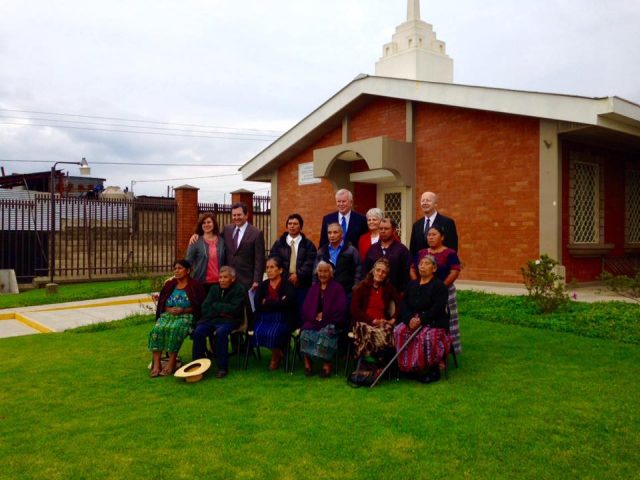
Latter-day Saints in Patzicia. Photo taken October 20, 2015. Front row second from left is Domingo Choc. Second row second from left is the stake president Wilian Miguel Can Macú. Back row: Elder Steven E. Snow and Richard E. Turley.
January 13, 2017: Posted on the Patzicia Stake Facebook page, an announcement of the death of Mauro Choc Ajsivinac: La Estaca Patzicia lamenta el fallecimiento de nuestro querido hermano Mauro Choc Ajsivinac quien en su vida lucho y trabajo para lograr su progreso espiritual para el, su familia y de muchos años quienes ayudó a conocer del evangelio y a quienes sirvió en los distintos llamamientos en su liderazgo dentro de la iglesia. A su familia sigan adelante y tengan fe, Dios vive y el testimonio del evangelio que el les ayudó a alcanzar, les ayude a comprender y saber que un día se reuniran como familia. Descanse en Paz hermano Mauro Choc Ajsivinac.











